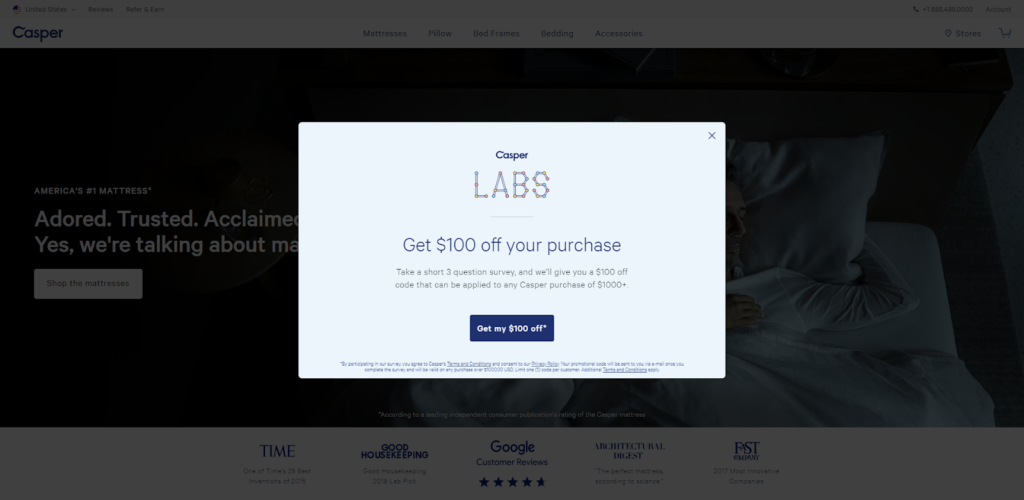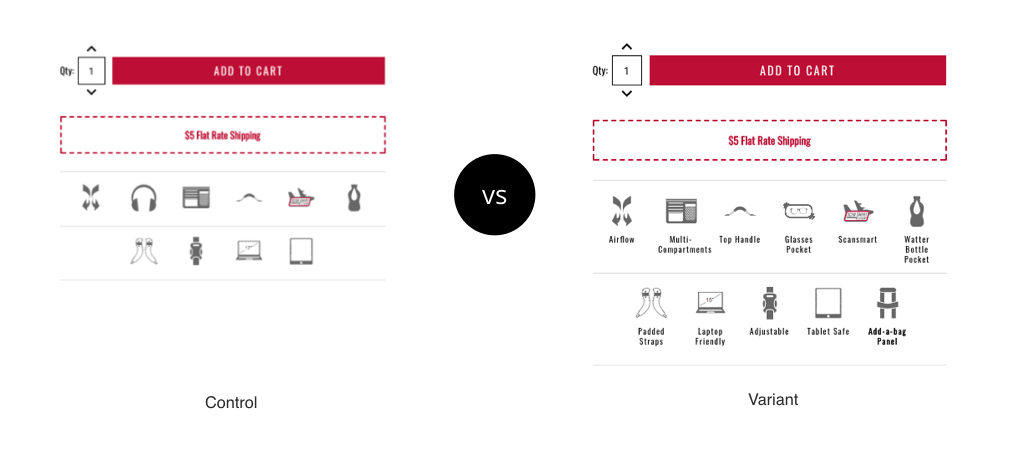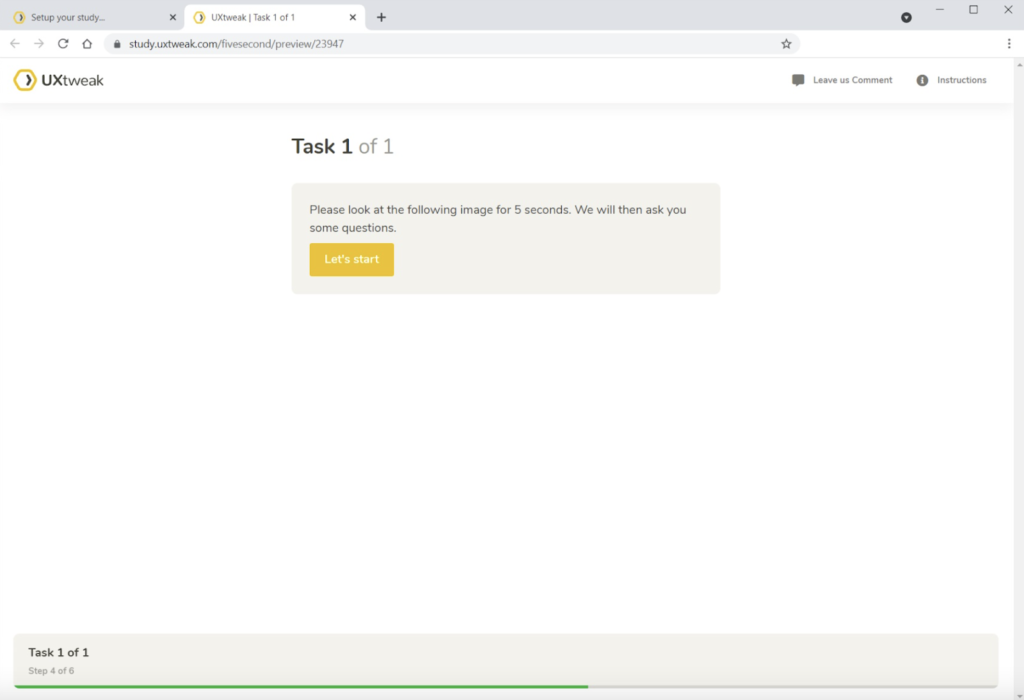
How To Increase Website Conversions With Low Traffic
So you have low traffic? You can still optimize your site!
While it would be nice to have an endless stream of traffic to your site, for many brands it’s more of a trickle–and, in some cases, a very, very small trickle.
You may not be able to generate thousands of visitors overnight, so it’s difficult to run quick conversion optimization tests to improve your sales.
Here’s the thing: high-traffic websites can run multiple experiments and variations at the same time because they have a large pool to draw from. This means they can see statistically significant results in a matter of days or weeks, producing faster iterations, more tests, and more data-proven results.
Sure, low-traffic sites can still run the same amount of tests and variations, but with a much smaller pool of visitors, they won’t produce the same statistical significance (unless they run the tests for weeks and weeks on end).
How much traffic is considered enough to run CRO tests?
There’s no hard and fast rule here, but we recommend having 5,000 visitors per variation for CRO tests to work effectively and provide accurate results. Alternatively, you can look for a 95% reliability rate if you have less traffic than that.
If you don’t reach that threshold, how can you optimize conversions?
6 ways to boost conversions even with low traffic
1. Quantitative research
If you don’t have enough traffic to draw from, you can work with what you have. Quantitative research involves collecting close-ended numerical data and using it to identify patterns and analyze characteristics.
For example, dive into your Google Analytics data to determine key drop-off points for visitors, the journey people take on your site, their demographics, and their overall shopping behavior.
You can also use closed-question surveys to scale data and get the information straight from your customers themselves. You can send a post-purchase email or simply put a call-out on social media asking your target audience to share their thoughts.
2. Qualitative research
Qualitative research seeks a deeper understanding of why visitors on your site behave in a certain way. While quantitative data helps you identify overall patterns and trends, qualitative data provides context. For example, you might discover that lots of visitors drop off at the point of checkout, but qualitative data will help you determine why they drop off.
You can try asking visitors open-ended questions as part of a survey or carry out phone interviews with a handful of your best customers. Your customer support team has valuable insights here too–analyze live chat transcripts to identify conversion sticking points and ask your support team about the most common questions they get asked.

Casper gives shoppers money off if they complete a survey.
User testing will give you an insight into what your website visitors actually think and do when they’re on your site. You can use this information to draw conclusions and test hypotheses–if it becomes apparent that visitors aren’t sure where to go next from a product category page or the checkout form is too long, you can assume that this might be hampering conversion rates. Use a dedicated site like User Input or carry out your own tests internally.

Fully uses heat mapping to see where potential customers click the most.
Heatmapping tools like Hotjar and CrazyEgg can also determine areas for improvement.
3. Test your highest-traffic webpages
Your site might have low traffic, but there are bound to be a couple of pages that get the lion’s share of visitors. You can use these pages to run A/B tests if the numbers are high enough, and apply the results to other similar pages.
For example, if you get over 10,000 visitors to your bestseller page, you can test the CTA buttons, copy, headings, contact forms, visuals, and other elements on that page and apply the results to other product pages that get fewer visitors.
Enjoying this article?
Subscribe to our newsletter, Good Question, to get insights like this sent straight to your inbox every week.
4. Test live changes
You might not have lots of traffic, but it’s easy to see if a page is performing better than its predecessor. Start by tracking the metrics on the page or element you want to optimize for a month and then implement the changes you’ve identified through user testing, surveys, heat mapping, and other primary research, and track the results of the new page for the next month. If conversion rates increase, you can safely assume that the changes you’ve made are working.

Swiss Gear tested different elements on their site to see which converted best. With low traffic, they could have tested one version for a month and the other for the next month to see which got the best results.
5. Consider rapid testing
Rapid testing is the act of getting quick answers from people other than your site visitors. In fact, having your audience involved is the antithesis of rapid testing, otherwise, it turns into real optimization that takes time. The goal of rapid testing is to get instant feedback on isolated elements of your site so you can act instantly.
The downside is, you’re giving up a few things to generate that speed. You’re giving up more statistical certainty and you’re giving up the ability to exactly test with your site visitors.
You can go to different types of small task warehouses that exists, where there are folks all over the globe who do small tasks for a dollar each. This can involve preference tests, which might mean putting up two different banners or two different page layouts and asking a very pointed question, like “which one of these has the better offer?” or “which one of these is more intriguing?”. The idea is to get thousands of responses in a short space of time–say, 12 hours or less.
Alternatively, you can do a five-second test, where you put up an image for five seconds and then take it down before asking people to describe what they remembered.
While rapid testing gets you quick answers, it’s important to remember that the people you’re testing on aren’t necessarily your customers (and they may not have ever heard of you). However, you can get them into your demographics at a high level–for example, you might ask males between the ages of 30 and 40 with an income above $50,000 to take part.

UXTweak makes it easy to set up preference tests and five-second tests.
Rapid testing can be particularly useful during busy periods and to identify the rapidly-changing context of your consumers. For example, a brand that’s just one month out from Black Friday might run a couple of rapid tests to bolster their conversion rates for the busy shopping season without having to spend weeks A/B testing elements with their actual customers.
6. Identify low hanging fruit
Low hanging fruit is the perfect opportunity to make quick and small tweaks to your site to increase conversion rates. Sometimes even making the smallest change can make a huge difference, like simply tweaking the wording on a homepage CTA, adding a 360 video to the image carousel on a landing page, or incorporating more testimonials, reviews, and case studies.
Start by pinpointing the areas where you can make the biggest impact–basically, where the most visitors are dropping off. Use your site analytics to find the worst-performing pages and look into your ecommerce reports to track the percentage of people who are looking at your product page and buying (or, on the flip side, not buying). If there’s a product with a particularly low add-to-cart rate, this tells you there’s probably something that customers don’t understand, or it’s too expensive, or you haven’t explained its benefits succinctly enough.
To help identify low-hanging fruit, ask yourself three things:
- Where? Where are people dropping off? Where is leaking conversions? Where are the highest bounce rates happening? Where can you easily increase website conversions? Your analytics will help you identify these sore spots.
- What? What’s causing people to drop off? What’s causing those high bounce rates? What’s creating friction? Heatmaps, surveys, and heuristic evaluation will be your friends at this stage.
- Why? Why are the drop-offs happening? Here, you’ll need to dig into qualitative research like surveys and live chat transcripts.
How traffic and conversion optimization work together
Traffic and conversions go hand-in-hand. Without traffic, you’ll struggle to get ecommerce conversions, and with bad conversion rates, the traffic you generate is completely pointless.
So many brands spend tons of money on driving traffic through ads–it’s often one of the first marketing expenses they make and it’s how they plan to scale. But usually, they won’t get the return on that ad spend because they don’t have a CRO strategy in place. You could go from spending $10,000 a month on ads to spending $100,000 a month, but you might start seeing your conversion rate go down if you don’t do anything else except drive traffic.
It doesn’t mean you won’t make any extra money, but if you truly want to scale in a sustainable fashion, you have to be adding fuel to the fire with a combination of quality traffic and conversion tactics on your site. Essentially, it doesn’t matter how good you are at driving traffic to your site if you aren’t converting visitors into customers.
Should I focus on boosting traffic or boosting conversion rates?
This is a classic chicken and egg situation. Which comes first for successful sites: strong traffic or good conversion rates?
So, where should you invest in your ecommerce site first – Search Engine Optimization (SEO) or Conversion Rate Optimization (CRO)?
Neither SEO nor CRO alone is going to magically take you from a low traffic, poorly converting site, to the next Amazon.com overnight.
Start with figuring out your baseline traffic and ensuring you have a working site where you can track conversions. From there, expert CRO and SEO professionals can help take you to the next level no matter what your constraints are.
CRO and SEO have one thing in common: O for Optimization.
Be flexible with your conversion rate goals
Conversion rate optimization is important for any ecommerce brand, but it’s markedly more difficult for brands with lower traffic. However, there are still plenty of ways you can identify areas of improvement and create a better customer experience that gets higher conversion rates and traffic.
It’s important that you’re flexible with your conversion goals and run small, focused tests that can hone in on areas that are dramatically underperforming. Combine qualitative and quantitative methods to provide context to your findings, identify low-hanging fruit for quick success, and tap into heat mapping tools, user testing, and five-second tests until you have enough traffic to run efficient A/B tests and other optimization activities to improve the user experience and build trust.
Naturally, as you continue to scale, you’ll hit a point where you’re sending less qualified traffic to your site because you’re sending much higher volumes. If you want to create a more formal CRO strategy, get in touch.
Enjoying this article?
Subscribe to our newsletter, Good Question, to get insights like this sent straight to your inbox every week.

About the Author
Jon MacDonald
Jon MacDonald is founder and President of The Good, a digital experience optimization firm that has achieved results for some of the largest companies including Adobe, Nike, Xerox, Verizon, Intel and more. Jon regularly contributes to publications like Entrepreneur and Inc.